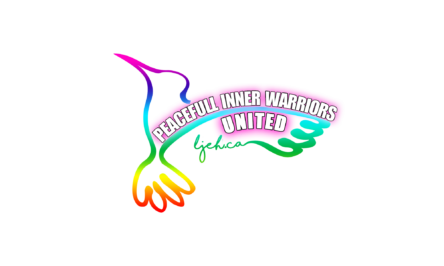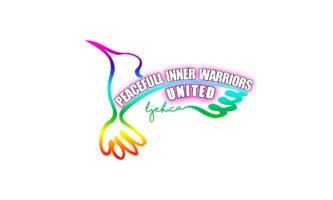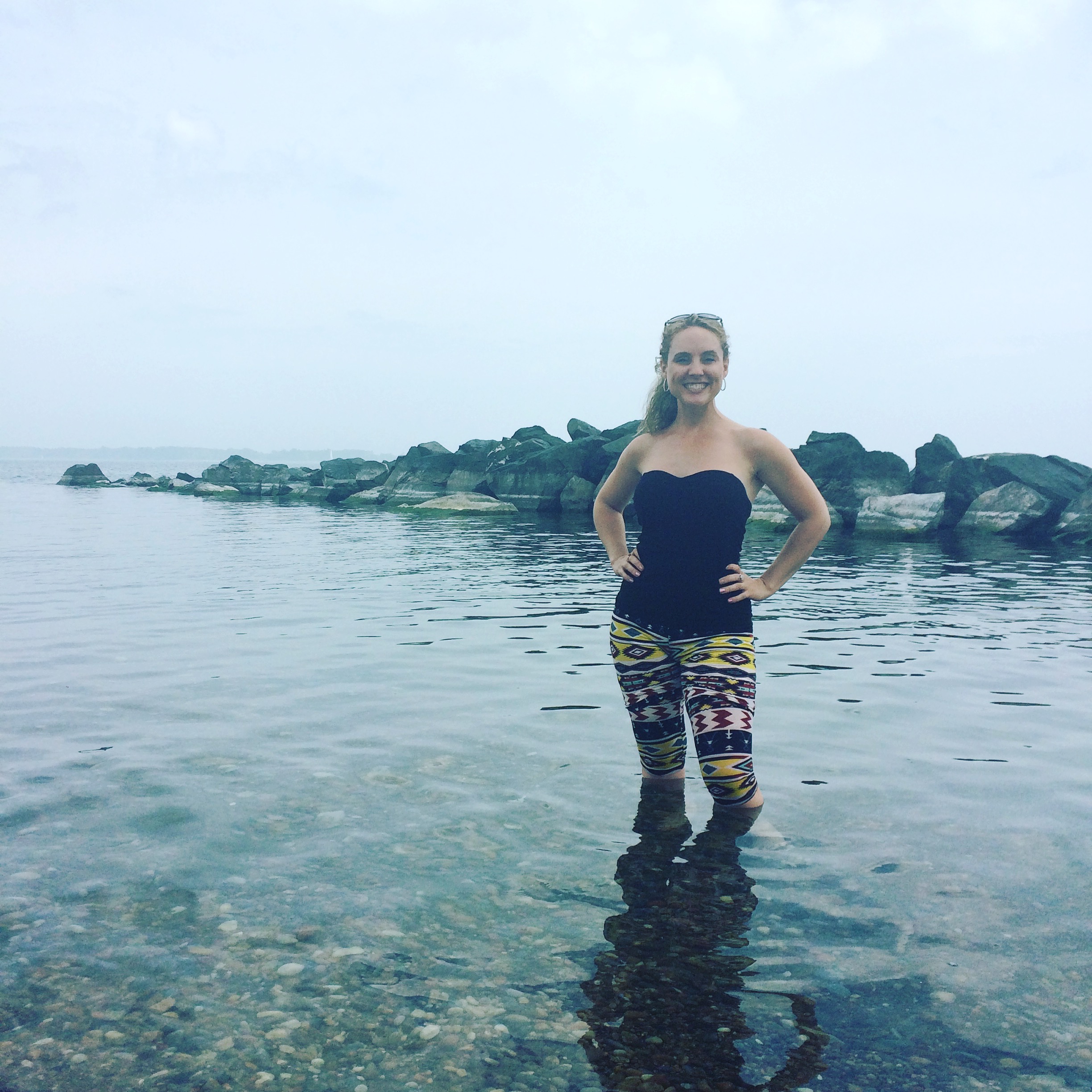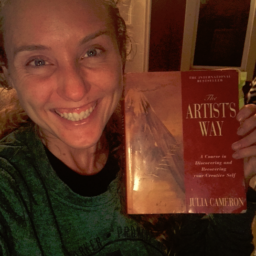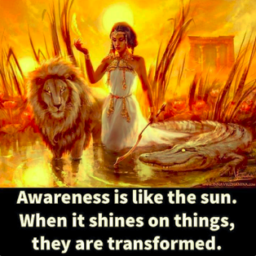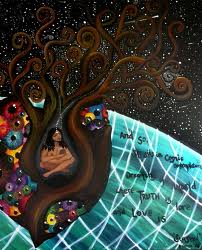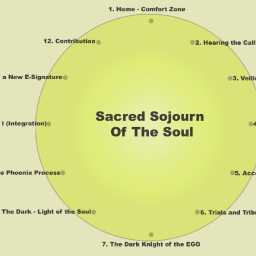Every chapter of our lives contains gifts of insight if we are willing to mine the experience for its lessons without judgement.
Far too often we discount experiences because we didn’t stick with them for the long haul, whether it be a job, relationship or hobby, but what if we shifted our perspective to see that we either stayed for as long as the opportunity could stretch, grow and mold us into who our soul came here to experience itself to be, or that in leaving ‘prematurely’ we got the lesson in a different way?
My role as an Organic Skincare Consultant with Neal’s Yard Remedies Organic (NYRO) while living in England taught me several significant lessons that I’ll share separately because each are worthy of their own post.
Today I want to share the content of a report I wrote in 2013 called “The Greatest Risk To Your Baby’s Health: Are You Protecting Them?”
It isn’t posted anywhere online as I simply created a PDF that I sent clients and prospects I hoped would use the report to make a more informed decision around the skincare products they purchased for their baby, and naturally it also included a product list that I hoped could help me get more sales from too. I have always viewed sales as a reciprocal exchange of value for currency so my intention was to offer practical information that I had a convenient solution for.
That said, given the times we are living in, when the toxic loads of many are reaching their max due to the death cult-u-re the mainstream seems to promote, I feel it’s time to offer the goods (information) without the sales pitch.
SUMMARY
In a world where consumers have an abundance of choice at their fingertips, awareness truly is power. But the source of this understanding and knowledge is crucial because we live in a world where what we see is not always what we get, and when it comes to the health of our little ones, ignorance is not a good enough excuse.
Most people understand the importance of choosing organic, natural, and chemical free foods and products but we often take for granted that the products available on store shelves have passed rigorous health and safety testing. This is a particularly dangerous assumption when the products are for our most vulnerable and precious darlings: our children.
When we start looking into what is actually in our skincare products, if you’re like me, I’m sure you too will be horrified by the hidden ‘nasties’ that are being absorbed into our bodies on a regular basis. When it comes to our little ones, particularly from birth to post nappy days, most parents are vigilant about what their little one comes into contact with and if organic or natural are an option, it’s usually the one we’ll choose.
Unfortunately we don’t always get what we think we’re paying for.
There’s a lot more to say on this topic but I want to keep this report as brief as possible so that you can make an informed decision based on what I’m about to share.
Often we use the expression “Ignorance is bliss” because if we don’t know something is bad for us, we won’t feel bad using it. My hope is that this report will get you curious. Curious about what ingredients are in the products you currently use on yourself and your family, and what a healthy alternative would be.
In this report, I will share:
- What the term ‘organic’ really means
- What a toxic load is and where it comes from
- The difference between fake and truly organic products
- Why we as consumers are responsible for ourselves
- 7 ingredients to avoid
- The alternative you wished you always knew about *NOT INCLUDED BUT SPOILER ALERT – IT WAS NYRO* 🙂
- How to Protect Your Baby Naturally *I’ve added a different ending this time without any brand affiliations*
What the term ‘organic’ really means
The term organic has become like a license to charge more money for goods. People are now more educated about the harmful effects of chemicals, toxins and environmental pollutants so paying more for a healthier option is a sacrifice many people are willing to make. But what makes being organic so important?
When something is truly organic it has never come into contact with an artificial or synthetic chemical, hormone or drug during its entire life cycle. It is able to decay and return to nature without any interruptions to the environment it interacts with. *In today’s world, where people are subject to patentability due to a 2013 Supreme Court ruling, this is becoming harder and harder to achieve if we aren’t willing to do our due diligence around what we are taking into our body.*
Organic organisms have an intricate cellular system that can sustain its own life without any external support or interference, aside from the basic necessities of food, heat and water. It’s also guaranteed to be unique because its DNA is similar but not identical to the original species. This is unlike the genetically modified “Frankenfoods” that pervade the market and are indistinguishable from one another.
The term ‘organic’ is defined by law therefore there are strict standards in place that define what can and cannot be done in the production of organic foods. Unfortunately, health and beauty products are not included in this legislation or regulation therefore there are no legal standards that product manufacturers must abide by when it comes to your external care regime. This makes uninformed consumerism a potentially hazardous activity. *Even more relevant now…*
The Soil Association is the UK’s main licensing body who regulates the production standards for organic foods. As will be mentioned later, health and beauty companies can pay to obtain this certification on their skincare products, but it is unfortunately not yet required.
Humans are fundamentally organic in our cellular structure and we are all vaguely familiar with the intelligent nature of our organs, of which the skin is our largest. We often unconsciously bombard our system with high levels of impure and inorganic content through the lifestyle choices and general environment we live in. While our skin and organs work very hard to keep our system clean and working properly, over time this abuse will show up as an ‘effect’, generally in the form of dis-ease, skin sensitivities or full- blown reactions.
Being at the top of the food chain means humans are continually consuming additional toxins in the plants and animal products we eat. When the skincare products we use contain contaminated ingredients, this further compounds the inorganic build up in our bodies, which is referred to as our ‘toxic load’.
These toxins can disrupt our normal bodily processes and can lead to abnormal cellular mutations that can pose serious health risks to you, the environment and your family.
What is a ‘Toxic Load’?
As I just mentioned, humans are fundamentally organic in our cellular structure however in the world we live in, it is extremely difficult to remain that way. Everyone has heard the expression that you are what you eat and this is true, but it applies to more than just our food.
What we put onto our skin is equally important because our skin is our largest organ and absorbs whatever is placed onto it. It doesn’t absorb 100% of it because it acts as our body’s outer defence mechanism but even when only a fraction of each product used is absorbed, it is still unnatural to the body, forcing the body to work harder to process it. And most people use a number of products on a daily basis, each of which contribute to this compounding effect. It’s never a matter of simple external moisturization.
For the most part, emphasis is placed on the foods we eat rather than the products we use on our skin which is quite crazy when we think about the absorption process of food versus product. As food is digested many of the harmful chemicals are removed as they’re filtered through the organs and guided to leave the body. Some of this residue does build up inside of the organs but less so than when the chemicals are absorbed through the skin.
A useful visual is to think of chemical infused products as a toxic army that penetrates the outer defence barrier and then infiltrates the various systems operating within it. Because the chemicals have more freedom to roam, they also have a greater opportunity to do more damage.
These foreign bodies interfere with the body’s ability to function at optimal capacity and subsequently, dis-ease may eventually develop. This is not guaranteed but it is a potential risk to consider.
Most products that we use on our skin, and our baby’s, contain ingredients with artificial and synthetic properties like chemicals, toxins and pollutants. These also get released into the air we breathe either knowingly or as an unintended side effect. We are living in and creating a very dangerous world by unconsciously consuming what’s available on the market. And if we expect anyone else, companies particularly, to care about our child’s health as much as we do we’re setting ourselves up for a big disappointment!
All of this is contributing to our toxic load which is also known as ‘body burden’. Our toxic load includes all the toxins our body has accumulated through environmental and ingested sources. While there are a number of ways we accumulate toxins, in this report I will keep it focused on the products we’re using on our babies.
There is an abundance of research available that goes into more detail about the implications of having a high toxic load but the fundamental problem is that it takes a toll on our nervous and immune systems because our body cannot process these foreign intruders.
Only when we know what something is can we efficiently manage it, ensuring it gets where it needs to go.
When our bodies receive a toxin that it does not recognize, it can’t ‘file’ it appropriately so will either send it somewhere randomly where it will accumulate and could potentially cause dis-ease over time, or it will continually circulate through our system making our body work harder unnecessarily. This gives it more time to cause damage.
Dis-ease is scary because it presents possibilities that are uncomfortable, painful, intrusive and inconvenient. When you had your baby, whether planned or unplanned, I imagine you intended to do your very best to ensure they have the best chance at becoming a successful and thriving member of society.
Health problems can interrupt their ability to get involved in their community, whether that be at school, on sports teams or in their socialization with other kids and adults. Health problems also create belief systems around weakness or ‘enough-ness’ that do not serve them as they progress throughout their school years and beyond.
Society traditionally works in a reactive way, fixing what breaks and mending what’s torn, but by choosing consciously for the health of you and your family, you will take on a preventative and proactive approach that will reward you dividends over the years.
Many people have questioned why allergies and skin sensitivities seem to have drastically increased in prevalence among children in the last decade. The reason is simple.
It comes down to vulnerability. Children are more vulnerable to toxic chemicals than adults because their immune and central nervous systems are developing and they’re generally less capable of eliminating toxins that enter their system. This has always been true but a correlation must exist between the abundance of environmental pollution, prevalence of artificial ingredients in products (both food and otherwise), and the increased number and variety of skincare, hair, hygiene and perfumed products people now use. *The childhood ‘medication’ schedule wasn’t even in my awareness then…*
This means a child’s body is more likely to store toxins than to release them which means they’re holding onto a lot of garbage and are being hit from a number of sources. Unless we become more conscious of what we use on their little body, then their toxic load will continue to build.
Due to the environmental conditions of the world we live in, a baby’s toxic load starts to accumulate while inside the womb. Anything going into and onto Mum is also affecting baby so pre-Mums must go into hyper vigilant mode even before the little one is out. By intentionally decreasing their exposure to toxins from the beginning, ideally from conception, their risk of allergies, skin sensitivities, and disease could be lower.
Ultimately, Mum’s health is crucial because if you’re not at your best, you can’t give your best to the world or to the ones that make up yours.
The difference between fake and truly organic products
Having read this report so far, you may or may not be surprised to know that some companies falsely label their products as organic and natural for the commercial benefits they receive by doing so.
When it comes to organic foods the soil association is the licensing body who protects consumers by setting strict standards that define what farmers and food manufacturers can and cannot do in the production of organic food.
Unfortunately, health and beauty products are exempt from this law so when it comes to external body products, ‘organic’ is a free-for-all term.
The only way to ensure the organic product you are buying is what it claims to be, is to look for the soil association label on it. This label verifies the organic content of the product and proves that the manufacturing facility, ingredients and production methods are inspected on an annual basis by the Soil Association or another certifying body.
If the product is not affiliated with a reputed association that verifies the organic nature of the product, it cannot be trusted.
It costs money to have this certification on individual products and the brand, so companies that do have the customer at the heart of their business.
I say this because companies can claim their product is organic with no legal ramifications or meaningful implications aside from being exposed in the public eye when someone has a serious reaction or a journalist does a thorough investigation. The unfortunate reality is that this can only impact these companies in a noticeable way if a large scale movement occurs that will change the buying pattern of the majority. And realistically, price and convenience are often the most important factors when making a buying decision so this often does not have the intended outcome. Until we are more aware of the health implications of our choices our behavior is unlikely to change.
We are always making a sacrifice when we make any decision of importance and in this particular situation, that sacrifice involves either our money or our child’s long term, and immediate, health.
What will you choose?
Why We, As Consumers, Are Responsible For Ourselves
We’ve all heard the expression that the only guarantee in life is death and taxes. It sounds grim but has truth to it. Often times as consumers we assume that our governments will protect us by strictly regulating the products available for sale on the market.
If we take for granted that companies will be honest about what they put in the health and beauty products they sell, we are putting ourselves at serious risk.
Many companies with a good reputation are sold to other companies who want the reputation and customer loyalty that comes with it. The fact they change the production procedures and the ingredient list in the process is not something they promote or encourage consumers to find out about. For that reason it is our responsibility to investigate this for ourselves.
In speaking to clients about various name- brand companies who have come under new ownership in the last few years, I always find it interesting how many people say they’d recognized a change in the quality of products but continued using it anyway because that’s what they’d always done.
It’s not legally wise or ethical for me to discredit other companies who produce and supply baby products to the market so I won’t. But I will here again recommend you investigate the ingredients used in your baby’s products on a regular basis.
If this report has got you concerned, firsthand experience is always the most powerful form of knowledge. You can start investigating product lists from the products you already have in your home or by dropping into a local retailer. Choose a product you want to know more about, take a picture of the ingredient list on the label and look up each ingredient online.
While this is not necessary, it will enable you to make a more informed decision when shopping, knowing your reason behind your actions.
You can also share this report with your friends and family so they too can shop with more confidence.
7 Ingredients to Notice and Avoid Where Possible
The following ingredient list is not exhaustive so I would recommend doing additional research of your own. That said, we do need to start somewhere so here is a list of 7 artificial ingredients I have been made aware of and wanted to share with you. The ingredients are not listed in a particular order and should all be given ample consideration when buying products for your baby.
- Parabens: Parabens have become a common topic of discussion due to their controversial impact on human health. Some types of parabens are naturally occurring in low concentrations in certain foods but the ones of concern are man- made derivatives of petrochemicals that are distilled in alcohol or other unhealthy substances. Parabens act as preservatives that extend the shelf-life of the product but can potentially shorten ours, due to their estrogen mimicking effect. They are cheap to produce and fight bacteria and fungal growth so most companies use them in their cosmetic products. There is also more than one type of paraben used in any one product therefore their concentration is higher than what may be factored in to health and safety studies. Many studies have been done to establish the health effects of using parabens and at this time, minimal amounts have been deemed safe for use meaning companies can continue using them in most countries.
Some countries, such as Denmark in 2010, have taken the more cautious road and banned the use of certain types of parabens in products for children under 3. There are six types of parabens that are most commonly used in personal care products: methylparaben, ethylparaben, propylparaben, isobutylparaben, butylparaben and benzylparaben. Denmark banned propylparaben and butylparaben.
The fact Denmark is erring on the side of caution, in my opinion, means we should consider doing this as well. Especially when we consider that cancer patients are advised to avoid all products that contain parabens after they’ve been diagnosed and treated for their dis-ease.
These nasties are easier to detect than most others because all their compounds include ‘parabens’ in the name. Prevention is always better than having to react.
- Petroleum distillates/ Petrochemicals: If you wouldn’t take your baby to a petrol station, smother him/her in petrol and then rub it in for good measure, avoid petroleum based ingredients like mineral oil, petrolatum, propylene glycol or paraffin because it’s essentially doing the same thing. There are other ingredients that fit under this category too so find out what these are.
Also consider where these ingredients come from. Paraffin, for instance, is a grey sludge left over from the production process at oil refineries which then need to be bleached and processed before it’s deemed suitable to work with. Its texture is then transformed to a solid consistency by adding in various chemicals, each of which can be harmful. Petrochemicals form the base of many skincare creams and oils and are often used as a lubricant and emulsifier.
- Fragrance and Parfum: People buy based on appeal and the more flavorful something is, the more appeal it often has. The reason the term ‘fragrance’ or ‘parfum’ are dangerous is because we are generally misguided when reading this ingredient on labels. Law does not require companies to list the chemical properties that make up the fragrance we are buying because they are deemed ‘secret recipes’ to protect the company’s product. It would also expose all the nasty chemicals used in the creation of that scent (some of which have already been mentioned).
Two groups I’d highly recommend for similarly minded information and current updates are the Environmental Working Group (EWG) and the Campaign for Safe Cosmetics. They did research into 17 name brand fragrance products and found an average of 14 chemicals in them, none of which were listed on the label. Compared to many products on the market this figure is actually very low, considering there are thousands of chemical ingredients to choose from.
Furthermore fragrances can contain hormone disruptors and are powerful allergens. While the ‘baby powder’ scent is a common fresh smelling fragrance for baby products, have you ever smelt anything like it in nature?
The next time you see fragrance on a label know that what it’s actually implying is ‘chemical stew’ and make your decision from there. When in doubt and wherever possible, buy fragrance-free.
- Phthalates: If you see this on a label drop it and tell your friends to do the same. It is used to soften plastic and increase durability, transparency and longevity of a product. The larger problem however is that it’s often not listed in the ingredient list at all because it’s a by-product of the manufacturing process. Be aware that products that contain ‘fragrance’ are often loaded with phthalates, of one concentration or another, so this is yet another reason to be cautious of artificial fragrance.
The cute picture of the child chewing on a teething toy is another great example of where this unassuming by-product can be found. Phthalates can also leach out of plastic containers, particularly when heated so if this concerns you do some digging into the plastics that release the greatest amount of chemical ‘nasties’.
- Sodium Lauryl/ Laureth Sulfate (SLS/SLES): This ingredient is a detergent and emulsifier used in thousands of cosmetic products to create the foaming effect that we, as consumers, have become accustomed to in most cleaning products. The foaming effect of soaps does not improve their ability to clean, but is added for visual reasons. SLS exerts its damage by stripping the skin of protective oils and moisture.
Because so many body care products are made with a number of chemical ingredients, all sorts of molecular bonds begin to form when they come into contact with each other and new and unintended chemicals are produced.
One of the biggest problems with this ingredient is that during the manufacturing process it often gets contaminated with 1,4 dioxane which is known to be a carcinogenic by-product. There are natural alternatives to this which can give a similar effect without the hazardous health implications so once again profits are the main reason for the use of this ingredient.
To avoid 1,4 dioxane, the Organic Consumers Association (OCA) recommends avoiding products with indications of ethoxylation. To do this, look for the following suffixes in the ingredient list: “myreth,” “oleth,” “laureth,” “ceteareth,” any other “eth,” “PEG,” “polyethylene,” “polyethylene glycol,” “polyoxyethylene,” or “oxynol.”
Sodium laureth sulphate (SLES) is a closely related ingredient but acts as a milder detergent, hence being most commonly used in baby products instead of SLS.
- Silicone: Yes, the same ingredient used in breast implants is used in many cosmetic and baby products to create the appearance of smooth, silky skin when in reality, it is only an illusion.
The main “difference” between the silicone used in breast implants and that used in baby products, in both skincare and playthings, are the various types of thickness and pliability. Case in point, saline breast implants have a silicone gel shell which is very close in consistency to pacifiers; they have the same pliability but are slightly denser.
In skincare products, silicone acts as a layer to keep moisture in the skin but can’t add any additional moisture to it, though what it is adding isn’t doing us any favors. It’s a variation of plastic chemicals so by sealing in current moisture levels, it simultaneously prevents the skin from breathing or releasing any of the sebum (natural oil), dirt or bacteria produced by the skin. Our skin has an innate ability to cleanse itself and expel toxins through the skin. This can needlessly cause inflammation, break outs and allergic reactions, among other things.
Covering things for effect will not ever help at the cause, so choose something that can work at the deeper level outward instead.
- Ethylenediaminetetraacetic acid (EDTA): This long winded word is equally hard for the body to process, particularly in babies. It takes a long time to get out of the body because the liver can’t metabolize it.
EDTA is primarily used as a product stabilizer because when it is exposed to air it binds to minerals and metal ions to inactivate them, preventing their adverse effects on the stability or appearance of cosmetic products. This helps to prevent the deterioration of the product, maintain clarity, protect fragrance compounds, and prevents rancidity. It is also really cheap.
This is all great for the company but it unfortunately does not benefit us in the same way.
Many natural companies will use Tetrasodium EDTA instead of parabens which is actually made of formaldehyde and sodium cyanide. In itself it may not be harmful but when used with parabens or SLS, it serves as a penetrator which allows these other chemicals to enter straight into the bloodstream.
While many of these chemicals have been deemed safe to use in minimal quantities, my personal view is that the long-term impacts of these chemicals have not been tested thoroughly enough to trust this advise. Belief systems change as new information is revealed and many chemicals once freely used in abundance have been deemed unsafe and banned many years thereafter. It is a chance you can take or avoid by simply changing your buying patterns.
How to Protect Your Baby Naturally
Nearly a decade after having written that report, I re-read it with new eyes to see and question how many of these ingredients are also in the experimental shots being imposed on people of all ages, including children. It’s horrifying but as every good vampire movie reveals, evil must be invited in.
Right now, we have been conditioned to be so busy we don’t have time to investigate things like I did to write this report back in 2013, or to research the ingredients used in all the shots that are being called for by the ‘professionals’ so after nearly two years of FEAR porn propagated left right and centre by the mainstream, many have given up.
Many have surrendered to the system that is designed to save itself and decided to trust what the politicians and medical/legal professionals recommend without considering the intense indoctrination process those men and women have undergone to promote dysfunctional and down-right dangerous agendas for the sake of their own pocketbook, livelihood and reputation. But in the words of Jiddu Krishnamurti: “It is no measure of health to be well adjusted to a profoundly sick society.”
Natural remedies have got a bad wrap because they aren’t profitable, but olive oil, coconut oil, shea butter, and beeswax can make incredibly healthy and healing remedies that you can make as DIY projects at home.
You can become an alchemist and healer while also becoming more autonomous in a world that would like for people to become patients and life-long customers to a corrupted medical model that treats symptoms instead of dealing with the root cause.
I wrote this blog (and report) because I believe in empowering people to make informed decisions and hope this helps you become a more conscious consumer now that so much of what we are being sold is tainted by the above (and worse).
If we’re willing to look for it, nature always has the solution and while this report has been focused on baby products, it is essential to remember that the products we are using on and in ourselves are also filled with these and other ‘nasties.’
Thank you for taking the time to read this report and for considering making different choices as a consumer.
The more people become unwilling to compromise on the quality of ingredients in products, the sooner companies will have to change. And considering, from my perspective, we are currently in the midst of an attempted corporatocratic takeover, please share this with your friends and family so they can make an informed decision for themselves and their family too; the 2013 Supreme Court ruling referenced above about patent-ability of people is directly connected to the “you’ll own nothing and be happy” propaganda that we’d all be well served to rally together and abolish!
With love,
Laura JeH – Namaste
Resources
ABOUT PHTHALATES Theo Colborn, Dianne Dumanoski and John Peterson Myers. http://www.ourstolenfuture.org, n.d. Web. 4 April 2013
BABY CARE: STARTING OUT RIGHT GUIDE TO LESS TOXIC PRODUCTS Environmental Health Association of Nova Scotia. www.lesstoxicguide.ca, n.d. Web. 2 April 2013.
DEADLY AND DANGEROUS SHAMPOOS, TOOTHPASTES, AND DETERGENTS: COULD 16,000 STUDIES BE WRONG Dr. Mercola. July 13, 2010. Web. 6 April 2013. http://articles.mercola.com/sites/articles/archive/2010/0 7/13/sodium-lauryl-sulfate.aspx
IS SILICONE IN BABY PRODUCTS AND BAKEWARE REALLY SAFE? safbaby2. July 28, 2011. Web. 6 April 2013. http://www.safbaby.com/
PARABENS David Suzuki foundation. http://www.davidsuzuki.org, n.d. Web. 3 April 2013.
PARABENS: EASY GREENING Melissa Breyer. Care2. January 20, 2007. Web. 5 April 2013. < http://www.care2.com/greenliving/parabens-easy- greening.html
PARABENS OUTLAWED IN CHILDRENS’ PRODUCTS IN DENMARK Meredith Melnick. Time: Health and Family. Dec. 22, 2010. Web. 5 April 2013 http://healthland.time.com/2010/12/22/parabens- outlawed-in-childrens-products-in-denmark/
PROTECTING OUR BABIES FROM TOXIC CHEMICALS Diba Tillery. www.earthmamaangelbaby.com, n.d. Web. 3 April 2013.
SODIUM LAURYL SULPHATE (SLS) Baby Centre. June 2011. Web. 6 April 2013. www.babycentre.co.uk
TETRASODIUM EDTA Cosmetics Info. n.d. Web. 6 April 2013. http://www.cosmeticsinfo.org
TOXIC LOAD: THE POISONOUS CHEMICALS IN YOUR BODY New Holistic Living. http://www.newholisticliving.com, n.d. Web. 2 April 2013.
WHAT I’VE LEARNED AS A NATURAL PRODUCT JUNKIE Michaela Evanow. May 18, 2012. Web. 5 April 2013. www.michaelaevanow.com
